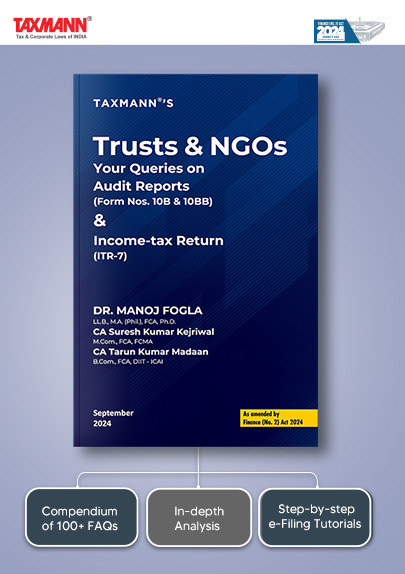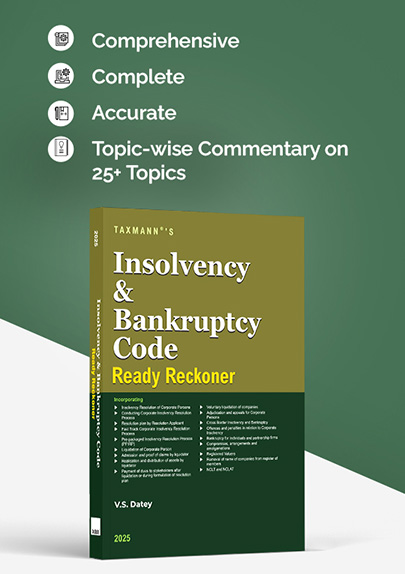[Opinion] No More Relief | Why Indexation Losses on Land & Building Can’t Be Carried Forward
- Blog|News|Income Tax|
- 2 Min Read
- By Taxmann
- |
- Last Updated on 4 March, 2025
Darshak Shah, Abhishek Shah & Hemlata Mali – [2025] 172 taxmann.com 34 (Article)
Introduction
The rules governing capital gains taxation have undergone a significant shift from 23rd July 2024, as indexation benefits under Section 48 of the Income Tax Act are no longer applicable for property sales beyond this date. This change is particularly impactful for taxpayers who have historically relied on indexation to lower their taxable gains.
This article aims to address key concerns, including:
- Indexation loss cannot be carried forward or set off against other capital gains.
- How will this affect capital gains tax calculations?
The timing of a property sale before or after 23rd July 2024 is crucial in determining tax implications. Understanding these changes is essential for effective tax planning.
Key Taxpayer Concerns: What Needs Clarification?
Many taxpayers are unsure about: Can indexation losses be carried forward and adjusted against other capital gains?
To clarify above point, let’s examine a real-life scenario.
Case Scenario 1: Understanding the Confusion Around Indexation Losses
Mr. Ramesh sold two properties in 2023-24 (post 23.07.2024). Both properties were purchased in 2000, and their fair market value as of 01.04.2001 was Rs. 11,00,000. While he sold Property X for Rs. 85,00,000, he could only sell Property Y for Rs. 35,00,000 due to market conditions. His tax liability under both the new and old regimes is calculated as follows:
| Sl. | Particulars | New Regime Property X (Rs.) | New Regime Property Y (Rs.) | Total (Rs.) | Old Regime Property X (Rs.) | Old Regime Property Y (Rs.) | Total (Rs.) |
| (a) | Sale Consideration | 85,00,000 | 40,00,000 | 1,25,00,000 | 85,00,000 | 35,00,000 | 1,25,00,000 |
| (b) | Less: Cost of Acquisition | 11,00,000 | 11,00,000 | 22,00,000 | – | – | – |
| (c) | Less: Indexed Cost of Acquisition (11,00,000 * 363/100) | – | – | – | 39,93,000 | 39,93,000 | 79,86,000 |
| (d) | Capital Gain (a-b) / (a-c) | 74,00,000 | 29,00,000 | 1,03,00,000 | 45,07,000 | 4,93,000 (Loss) | 40,14,000 |
| (e) | Capital Gain Tax Rate | 12.5% | 20% | ||||
| (f) | Capital Gain Tax | 12,87,500 | 8,02,800 |
Click Here To Read The Full Article
Disclaimer: The content/information published on the website is only for general information of the user and shall not be construed as legal advice. While the Taxmann has exercised reasonable efforts to ensure the veracity of information/content published, Taxmann shall be under no liability in any manner whatsoever for incorrect information, if any.

Taxmann Publications has a dedicated in-house Research & Editorial Team. This team consists of a team of Chartered Accountants, Company Secretaries, and Lawyers. This team works under the guidance and supervision of editor-in-chief Mr Rakesh Bhargava.
The Research and Editorial Team is responsible for developing reliable and accurate content for the readers. The team follows the six-sigma approach to achieve the benchmark of zero error in its publications and research platforms. The team ensures that the following publication guidelines are thoroughly followed while developing the content:
- The statutory material is obtained only from the authorized and reliable sources
- All the latest developments in the judicial and legislative fields are covered
- Prepare the analytical write-ups on current, controversial, and important issues to help the readers to understand the concept and its implications
- Every content published by Taxmann is complete, accurate and lucid
- All evidence-based statements are supported with proper reference to Section, Circular No., Notification No. or citations
- The golden rules of grammar, style and consistency are thoroughly followed
- Font and size that’s easy to read and remain consistent across all imprint and digital publications are applied






 CA | CS | CMA
CA | CS | CMA


